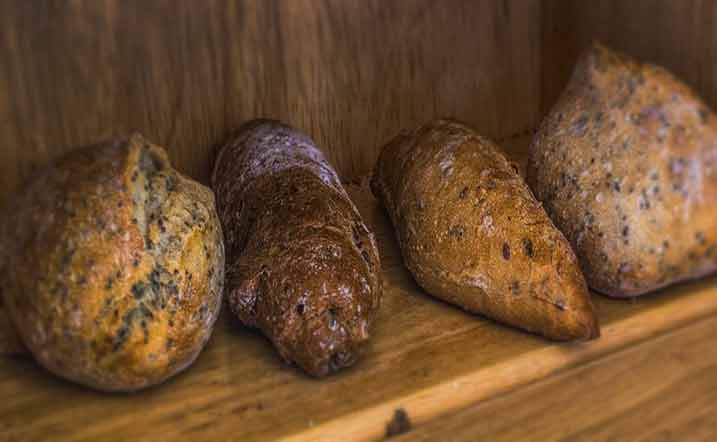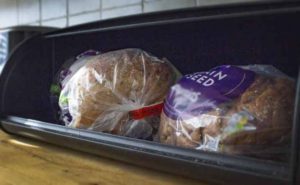This page may have Commerce Content. If you buy something from our posts, we may get a small share of the sale.

Where To Store Bread in the Kitchen (Keep Bread Fresh For longer)
There are many places where you can store bread, but each place is appropriate for certain types of bread. Read on to learn about where to store bread in the kitchen.
The key to understanding where to store your bread so it stays fresh longer is knowing what type of bread fairs better in certain storage locations.
For those who like to keep their bread fresh at all times, it’s worth spending a moment to think about the options available for storage relative to the ingredients in the bread.
In a Bread Bag on the Countertop
Keeping your bread in a typical plastic bag or linen bread bag is perfectly fine for most varieties of sandwich-style loaves. This includes typical wheat flour loaves, which have far less moisture content than other types of loaves.
Keeping these types of loaves at room temperature for a short period before placing them into an airtight container is perfectly acceptable.
The reason for this being a lower moisture content. High moisture content bread “sweats” moisture when it is stored in airtight containers.
Inside a Bread Box
A bread box usually has small holes for air circulation and a lid, which regulates heat and moisture inside the bread box.

This allows the bread to stay fresh longer than usual because it slows down staling rates significantly by keeping out excess moisture and warmth from reaching your bread.
One common type of bread bin or box is made with stainless steel mesh on all sides. This type of box is ideal as it allows air flow which regulates the temperature and moisture inside the box.
In the Bread Drawer of the Pantry or Cupboard
The bread drawer in your kitchen pantry usually is reasonably cool. However, it can also be dry due to its location. The drawers are usually found at the very bottom of the pantry storage units.
This place makes it great for storing whole-wheat loaves thanks to this type of bread’s high moisture content.
You will be able to keep these types of loaves at room temperature after purchasing them for up to 5 days depending on the ambient temperature in your pantry.
On the Countertop in an Airtight Container
Some bread can be left at room temperature. This includes typical sliced sandwich loaves like wheat, and also sourdough.
For these types of loaves which contain a lower moisture content, keeping them under airtight conditions will slow down staling rates by keeping out excess water and warmth that causes staling to occur more rapidly.
Bread slices should always be wrapped tightly with plastic wrap before putting them back in the container once you take a slice out to prevent mould from developing.
In the Freezer
Though not recommended for most types of bread, freezing whole loaves that are sliced is sometimes the only way to store them for a more extended period.
Generally speaking 3 months is the maximum amount of time I’d recommend a sliced loaf bread to be frozen.
If you plan to thaw and eat the bread within a few days after taking it out of the freezer. Leave the loaf at room temperature to thaw fully prior to serving.
Bread kept in the freezer lessens in water content more rapidly over time compared to other storage methods due to dehydration during the freezing and defrosting processes.
Just remember to remove your loaf from its original package before putting it in the fridge, so you don’t transfer any unpleasant odors coming from your freezer!
Keeping them in airtight containers while still frozen will retain their moisture content while preventing freezer odors from reaching your bread.
Conclusion
In summary, breads that have a high oil content will have a longer shelf life compared to bread made with only flour, salt and water. These types of bread are ideally stored unwrapped inside a bread box.
Bread with a low water content will stay fresh for longer inside airtight containers such as a food storage container with a sealable lid.
Italian style breads tend to have more oil as part of their ingredients so are better stored inside a bread box.For those of you who like the science behind moisture content of bread, have a read of this article on the subject.
Popular Posts






